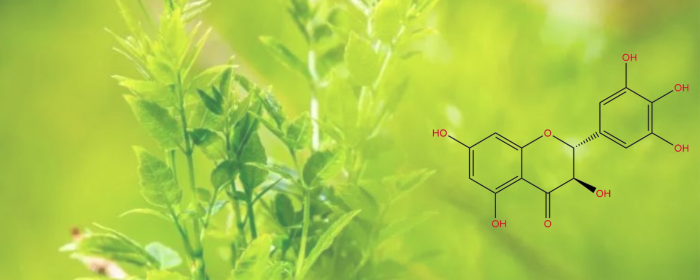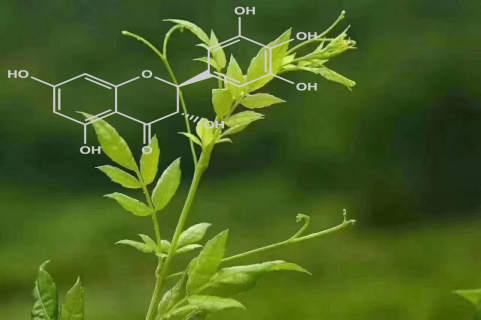
In recent years, dihydromyricetin (DHM), a natural antioxidant, has attracted significant attention for its potential anti-aging effects.
What is Dihydromyricetin?
Dihydromyricetin is a flavonoid compound mainly extracted from Ampelopsis grossedentata, a traditional herb used for its health benefits. The potent antioxidant and anti-inflammatory properties of DHM are responsible for its therapeutic effects. Recent studies have revealed its potential in improving metabolism, protecting cellular health, and delaying aging, making it an intriguing candidate for anti-aging research.

How Does It Fight Aging?
Dihydromyricetin combats aging through several mechanisms.
Neutralizing Free Radicals:
The accumulation of free radicals causes oxidative damage to cells, accelerating aging. DHM has powerful antioxidant properties that neutralize free radicals and reduce oxidative stress, protecting cells from harm.
Suppressing Chronic Inflammation:
Chronic inflammation is a major driver of aging. DHM regulates inflammatory pathways and inhibits the production of pro-inflammatory factors like TNF-α, mitigating tissue damage.
Preserving Mitochondrial Function:
Mitochondrial dysfunction is a hallmark of aging. DHM helps maintain mitochondrial membrane integrity and promotes healthy energy metabolism, ensuring proper cellular function.
Improving Metabolism:
DHM enhances glucose and lipid metabolism, reducing the risk of metabolic disorders, and thereby slowing down the progression of age-related diseases.
Experimental Evidence
Study 1:
In 2020, Dr. Zhang J and colleagues published a study in the Journal of Cellular Biochemistry that investigated the anti-aging effects of DHM on human fibroblast cells. The researchers treated human dermal fibroblasts with 10 μM of DHM and subjected them to oxidative stress induced by hydrogen peroxide (H₂O₂). [1]
Their findings showed that DHM significantly reduced reactive oxygen species (ROS) levels in fibroblasts and enhanced cell viability. Moreover, DHM upregulated the expression of the antioxidant enzyme superoxide dismutase (SOD) and reduced lipid peroxidation markers, demonstrating strong antioxidant protection.
Study 2:
In 2018, Dr. Lee S H and his team conducted a study published in Biomedicine & Pharmacotherapy, examining the effects of DHM on mitochondrial function in aged mice. They supplemented the diet of 18-month-old mice with 100 mg/kg of DHM for 12 weeks.[2]
The study reported improved mitochondrial membrane potential and ATP production in liver and muscle tissues. Additionally, DHM reduced oxidative damage markers such as malondialdehyde (MDA) and increased the activity of cellular repair enzymes, indicating improved mitochondrial health.
[1] Zhang, J., et al. (2020). “Protective effects of dihydromyricetin on oxidative stress-induced cell damage in human fibroblasts.” Journal of Cellular Biochemistry.
[2] Lee, S. H., et al. (2018). “Dihydromyricetin supplementation improves mitochondrial function and reduces oxidative damage in aged mice.” Biomedicine & Pharmacotherapy.
